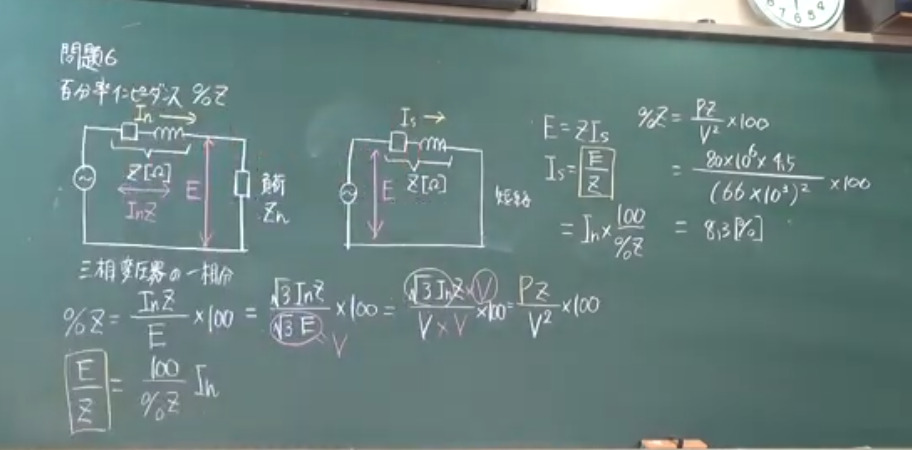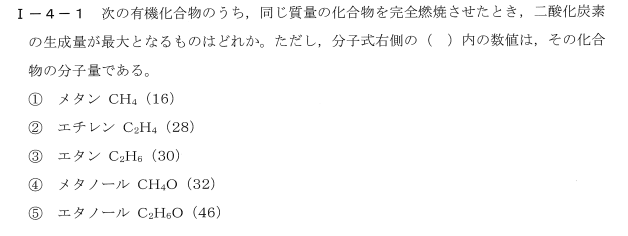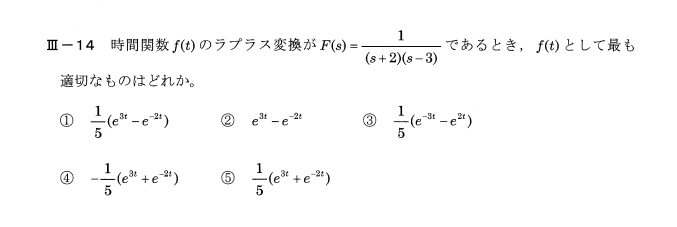[GPT3による要約]
この記事では、近年登場した新しいタイプの経済であるクリエイター・エコノミーについて論じています。クリエイターエコノミーは、人々がオンラインでコンテンツを制作し、共有することによって価値を創造できるという考えに基づいている。この記事では、人々が好きなことをして生計を立てることができるようになるため、クリエイターエコノミーはポジティブな発展であると論じています。また、クリエイターエコノミーがもたらす課題として、競争が激しく、群衆から抜け出すのが難しいという事実も論じています。
全文
Funding projects, goods, and creators: Crypto Raiders, Animetas
All the ways we have of funding video games kind of suck in different ways.
But they’re what we are used to. They’re the water we swim in.1
Some provide enormous barriers to entry & lock in.
A lot of them don’t give creators what they deserve.
People have been asking since the start of crypto: what’s our killer app?
What can we do with this? Even now, beyond rocks and penguins?
Let’s find out more today.
Let’s summarize the problem here: undercapitalization of creative efforts.
Here’s a short summary of Alan Luo’s illuminating piece, Crypto Creators.
There is a mismatch in the volume of blood and sweat creators put into their work, and the bread that is put on the table.
The creative class has been undercapitalized: they can garner millions of followers, but find it difficult to monetize them.
Typically, this has led to proliferation of agents and middlemen, which can lead to fraught and complex relationships. (Britney Spears. Mariah Carey. Backstreet Boys. Whitney Houston.)
Our web2 era is better at that: one can survive with 1,000 true fans, which is enabled by the internet. Crowdfunding, streaming, and buymeacoffee enables this.
Crypto as a means of funding creatives is even more promising: it allows every transaction to be conducted directly with the customer, and helps creators retain fanbases across multiple services. (Your take rate is my opportunity.)
It is also persistent, which allows creators to stay in contact with their fans when a platform crumbles. “All apps live in the same shared ecosystem.”
Quick refresher: in Level 2, we spoke about the two main money challenges of game developers:
(1) finding ways to fund initial development,
(2) finding ways to generate revenue from their game that outstrips expenses.
Let’s grind through some challenges together.
Let’s find out how web3 empowers creators to tackle both these challenges.
プロジェクト、グッズ、クリエイターに資金を提供する。クリプトレイダーズ、アニメタス
ビデオゲームに資金を提供するすべての方法は、さまざまな意味で最悪です。
しかし、それらは私たちが慣れ親しんでいるものです。私たちが泳いでいる水です1。
あるものは、参入や囲い込みに巨大な障壁を提供する。
その多くは、クリエイターにふさわしいものを与えていません。
暗号が始まったときから、人々は「キラーアプリは何か?
このアプリで何ができるのか?今でも、岩やペンギンを超えるものはあるのでしょうか?
今日はもっと調べてみましょう。
ここで問題を要約してみましょう:創造的努力の過小資本化。
アラン・ルオの照明的な作品「Crypto Creators」を簡単に要約してみます。
クリエイターが作品に注ぐ血と汗の量と、食卓に並べられるパンの量にミスマッチがある。
クリエイター層は、何百万人ものフォロワーを集めても、それをマネタイズすることが難しいという、資本不足に陥っているのです。
典型的な例として、これはエージェントや仲介者の急増につながり、もめごとや複雑な関係につながることがある。(ブリトニー・スピアーズ、マライア・キャリー、バックストリート・ボーイズ、ホイットニー・ヒューストンなど)。
私たちのWeb2時代はその点優れています。1,000人の真のファンがいれば生き残ることができ、それはインターネットが可能にします。クラウドファンディング、ストリーミング、buymeacoffeeがそれを可能にする。
クリエイターの資金調達手段としての暗号はさらに有望だ。あらゆる取引が顧客と直接行われ、クリエイターが複数のサービスにわたってファンベースを維持するのに役立つからだ。(あなたのテイクレートが私のチャンスです)。
また、永続的であるため、プラットフォームが崩壊しても、クリエイターはファンとのコンタクトを維持することができます。"すべてのアプリは、同じ共有のエコシステムの中で生きている"
簡単に復習すると、レベル2では、ゲーム開発者が抱える2つの主なお金の課題について話しました。
(1) 初期開発資金を調達する方法。
(2)ゲームから費用を上回る収益を上げる方法を見つけることです。
今回は、その課題を一緒に解決していきましょう。
この2つの課題を解決するために、web3がどのようにクリエイターを支援するのかをご紹介します。
Raising Capital
It has never been easier for creators to raise capital to pursue their vision.
Venture Capital firms, Angel Networks, crowdfunding, Patreon…
Crypto brings this to the next level.
Here’s some projects that raised on a landing page and a whitepaper:
Crypto Raiders
How often do you see games raise from an interested and invested community, and grow its community organically to 4,000+ followers within 45 days?
Animetas
Animetas created their twitter account in June, launched at the end of Jul with their (lovingly crafted) generative project, & sold 10,000 different Animetas at a mint2 price of 0.08 Ethereum (ETH) each.
That’s 800 ETH, or 2.4 million USD from their primary sale. (You could buy a lot of coffees with that.)
Kickstarter has a take rate on primary sales of 5%. Blockchain reduces this take rate to almost 0. No centralized party or platform takes a cut from the initial sale besides the creator.3
Additionally: the pattern has flipped from sales after the build, to raising for the development of your world upfront.
But this wasn’t the first time this happened. Allow me a short digression on blockchain history.
Vitalik Buterin, one of many shadowy super coders4, wrote a whitepaper for Ethereum in 2013. Subsequently, the development was crowdfunded between July and August 2014, and the network went live in 2015.
The points on margin and opportunity are not fundamentally new.
We’re just getting started. The gaming industry was valued at $160 billion in 2020. Guild of Guardians claims it can be a $1 trillion economy.
Why?
Community and Value Alchemy
Community is key to the success of any crypto project, even moreso than web2 projects.
The difference: access to these communities and their economies are not gated by geography, or even money.5
Even if you don’t possess one of their NFTs, opportunities to contribute to that community’s economy opens up. I can hang around in the Animetas discord even without my own Animeta.
In these communities, people will commission derivative art. Projects open up positions for writing, programming, and world-building endeavours.
This is an economy. I call it value alchemy: the creation of value from seemingly ‘nothing’.
Crypto Raiders, for example, started the hiring process for writers, and programmers from within its own Discord community.
Now, you can work with people, whose faces you’ve never seen, on projects you find personally interesting. Bring your skillset, and find Work in the Metaverse.
We will teach you for free.
If you want to help the Bored Apes build their riverboat casino in Decentraland, go for it! You might make enough from this work to pick up your own Bored Ape. Perhaps at Christie’s?
資本調達
クリエイターがビジョンを追求するための資金を調達することが、かつてないほど容易になりました。
ベンチャーキャピタル、エンジェルネットワーク、クラウドファンディング、Patreon...。
Cryptoはこれを次のレベルへと押し上げる。
ランディングページとホワイトペーパーで資金を調達したプロジェクトをいくつか紹介します。
Crypto Raiders(クリプト・レイダース
ゲームが関心を持ち、投資したコミュニティから資金を調達し、45日以内にそのコミュニティを4,000人以上のフォロワーに有機的に成長させるのを見るのはどれくらいの頻度でしょうか?
Animetas
Animetasは6月にTwitterアカウントを作成し、7月末に彼らの(愛情を込めて作られた)ジェネレーティブ・プロジェクトを立ち上げ、1万種類のAnimetasをそれぞれ0.08 Ethereum(ETH)のmint2価格で販売しました。
これは800ETH、または彼らの最初の販売から240万米ドルです。(これでコーヒーがたくさん買えますね)。
Kickstarterの一次販売における取得率は5%だ。ブロックチェーンはこの取得率をほぼ0にし、クリエイター以外の中央集権的な関係者やプラットフォームが最初の販売から利益を得ることはない3。
さらに、構築後の販売から、自分の世界の開発費を前もって調達するパターンに反転しています。
しかし、このようなことは今に始まったことではありません。ブロックチェーンの歴史について少し余談をさせてください。
数ある影のスーパーコーダー4 の一人であるVitalik Buterinは、2013年にEthereumのホワイトペーパーを書きました。その後、2014年7月から8月にかけてクラウドファンディングで開発が進められ、2015年にネットワークが稼動した。
マージンやチャンスに関する指摘は、根本的に新しいものではない。
これからが本番です。2020年のゲーム業界の評価額は1600億ドル。Guild of Guardiansは、1兆ドルの経済になり得ると主張しています。
なぜなのか?
コミュニティと価値の錬金術
コミュニティは暗号プロジェクトの成功の鍵であり、Web2プロジェクトよりもさらに重要です。
その違いは、コミュニティへのアクセスやその経済が、地理的な制約や金銭的な制約を受けないことです5。
NFTを所有していなくても、そのコミュニティの経済に貢献する機会はある。私は自分のアニメタを持っていなくても、アニメタ・ディスコードをぶらぶらすることができます。
このようなコミュニティでは、人々が二次創作を依頼することがあります。プロジェクトでは、執筆やプログラミング、世界観の構築のためのポジションが開放されます。
これは経済です。私はこれを価値の錬金術と呼んでいます。一見「無」に見えるものから価値を創造することです。
例えば、Crypto Raidersは、Discordコミュニティの中で、ライターやプログラマーの採用プロセスを開始しました。
今、あなたは見たこともない顔の人たちと、個人的に面白いと思うプロジェクトで一緒に働くことができます。あなたのスキルを活かして、メタバースで働きませんか?
私たちは無料であなたに教えます。
もしあなたがDecentralandでBored Apesが川船カジノを建設するのを手伝いたいのなら、ぜひやってみましょう。この仕事から、あなた自身の退屈な猿をピックアップするのに十分なお金を稼ぐことができるかもしれません。もしかしたらクリスティーズで?
Financial and Social Incentives
With NFTs, you create a tribe of players invested in the success of the game, not least due to their financial incentive.
Early adopters start with an up-front investment in the game. First, they get to enjoy the game, and any financial upside from appreciation of the game can be an upside for the players.6
The gold sword you just forged in that game? The one with the rare stats, with a 1/1,000,000 chance to roll?
Now worth more than its weight in gold.
Jokes aside, through the power of financial and social incentives, NFTs have made it possible for these digital artefacts to accrue value.
Of course, it is not just pure upside. One new challenge game projects will face is managing the expectations of a section of stakeholders: investors, and the new player persona: the Dealer.
Of course, this expectation happens in both the web2 world, and the web3 world: games still have to remain financially sustainable. (See Level 2 for a more in-depth discussion.)
Web3 provides us new tools we can use to sustain our games, but also new expectations. Investors (of time, and money: as we know, Time is Money, friend), will expect not just to get their initial investment back. In fact, they will expect a yield. If they fail to receive that yield, this can lead to volatility in the game’s economy as investors exit.7
Because we monetize with tax on secondary market sales of assets, we can focus on designing the game to (1) be fun (so players stick around long enough to trade their assets!) and (2) to encourage player-driven economies & trading.8
Secondary Market Sales
You might ask: why would secondary market sales for P2E games do better than primary market sales for F2P games?
Well, one of the key differences for secondary market sales in P2E games is provenance, along with strong web3 transaction norms.
Grey markets lead to a 0% tax rate on transactions into real money. They also come with a host of strange problems, like trusting that the other person will not run away with your money. See: d2jsp, and other forms of grey market trading.9
I touched upon this in my NFT primer back in March 2021.
“NFTs allow (creators) additional incentives to create, by providing more avenues to capture value”. Any work creators make can continue providing them returns into perpetuity on the secondary market.10
The majority of transactions in web3 games will be peer-to-peer, rather than player-to-developer.11
In web2 traditional games, any purchase one makes in a game is an illiquid asset. For example, the $49.99 I spent on Hearthstone for 40 card packs (200 cards) is worth $0 on a secondary marketplace. Primarily because there are no secondary marketplaces for you to transact your cards.12
In web3 games, players can transact directly with other players, and a small percentage goes to the developers. In comparison, if I spend $49.99 on my cards in an NFT game, I can resell them. It could be for $49.99, or $1000.00, but it’s non-zero as long as there’s interest.
Psychologically, this may make me more willing to spend $49.99 on my cards. In fact, according to actual transaction data, it can apparently make one willing to spend up to 135 ETH on one card (400,000 USD).
This is tantalizing: as a player, I get to sell the assets I spent farming to other players, a theme we touched upon in Level 2.
Individual creators seed a world with their work, and reap the fruits of their labour, in dividends. As for the life-affirming piece; is it not tremendously life-affirming to create the worlds you find most enjoyable and meaningful?
金銭的および社会的インセンティブ
NFTでは、ゲームの成功に投資するプレイヤーの仲間を作ることができますが、特に金銭的なインセンティブが重要です。
アーリーアダプターは、ゲームへの先行投資でスタートします。まず、ゲームを楽しむことができ、ゲームの評価による金銭的な上乗せは、プレイヤーにとっての上乗せとなります6。
そのゲームで鍛えたばかりの金の剣?6 そのゲームで鍛えたばかりの金の剣は?
その剣は、今やその重量以上の価値がある。
冗談はさておき、NFTは金銭的・社会的なインセンティブによって、こうしたデジタルアータファクトの価値を高めることを可能にしました。
もちろん、純粋な価値だけではありません。ゲームプロジェクトが直面する新たな課題の1つは、投資家、そして新たなプレイヤーであるディーラーといったステークホルダーの期待に応えることです。
もちろん、このような期待は、Web2の世界でもWeb3の世界でも起こります。(より深い議論は、レベル2を参照してください)。
Web3は、ゲームを維持するための新しいツールを提供してくれますが、同時に、新しい期待も与えてくれます。投資家(時間とお金:ご存知のように、時は金なり)は、単に初期投資の回収を期待するだけではないだろう。実際、彼らは利回りを期待するでしょう。もし、その利回りが得られないと、投資家が退場するため、ゲームの経済が不安定になる可能性があります7。
セカンダリーマーケットでの資産売却にかかる税金でマネタイズすることで、(1)楽しいゲームにすること(そうすればプレイヤーは長く滞在して資産を取引できる!)、(2)プレイヤー主導の経済と取引を促進すること(8)に焦点を当てることができるのです。
セカンダリーマーケットでの販売
なぜ、P2Eゲームのセカンダリーマーケットの売上は、F2Pゲームのプライマリーマーケットの売上よりも優れているのでしょうか?
P2Eゲームのセカンダリーマーケット販売における重要な違いの1つは、出所と強力なWeb3取引規範です。
グレーマーケットを利用すると、リアルマネーへの取引にかかる税率が0%になります。また、相手がお金を持ち逃げしないかどうかなど、多くの奇妙な問題も伴います。参考:d2jsp、その他のグレーマーケット取引9
私は、2021年3月のNFT入門でこのことに触れました。
「NFTは、価値を獲得する手段を増やすことで、(クリエイターの)創作意欲をさらに高めることを可能にします。クリエイターが作った作品は、セカンダリーマーケットで永続的にリターンを提供し続けることができるのです10。
Web3ゲームにおける取引の大半は、プレイヤー対デベロッパーではなく、ピアツーピアで行われます11。
従来のWeb2ゲームでは、ゲーム内で購入したものは非流動的な資産となります。例えば、ハースストーンで40パック(200枚)のカードに費やした49.99ドルは、二次市場では0ドルの価値しかありません。主に、カードを取引するためのセカンダリーマーケットが存在しないためです12。
Web3ゲームでは、プレイヤーは他のプレイヤーと直接取引でき、わずかなパーセンテージが開発者に支払われます。それに比べ、NFTゲームでは、49.99ドルを使ってカードを購入すると、それを転売することができます。49.99ドルでも1000ドルでも、関心がある限りゼロにはならない。
心理的には、49.99ドルのカードにもっとお金をかけたいと思うようになるかもしれません。実際、実際の取引データによると、どうやら1枚のカードに135ETH(40万米ドル)まで使う気にさせることができるようです。
これは、レベル2で触れた「プレイヤーとして、自分がファームアップに費やしたアセットを他のプレイヤーに売ることができる」というテーマと同じで、ゾクゾクします。
個人のクリエイターが世界に種をまき、その果実を配当として得る。生きがいの部分ですが、自分が一番楽しいと思う世界、意味のある世界を作ることは、非常に生きがいになるのではないでしょうか?
Interoperability and Composability
Beyond discussion of the development of internet civilization, Zhu Su touches upon a sweet point for NFTs in the metaverse. Composition of value.
The value and the IP they generate, can be built upon, composed and reused. Interoperable. Cells, interlinked.
An NFT that represents a character in an RPG, has a certain set of stats associated with that NFT.13
These stats and skill trees on the character can be reused in multiple battle systems. In principle, any developer can build out new battle systems for that character, and get paid by the community. Whenever an operator gets traded because of this new value created for the game’s ecosystem, the original creators will get a royalty too.
Rewarding Community Value Creation
People regularly rock up and add value to communities, all for no monetary compensation. See Wikipedia. See game wikis. See fan art.
Now there’s a way to easily reward those community contributors.
Here’s some of the art that has been created in response to Animetas by artists around the world.
Animetas launched less than 30 days ago, and they’ve already started an Animetas Derivative Artwork initiative. They also affirm the above: that community is their most important asset.
We’ve established a lot this level.
Probably the difficulty curve: lots of grinding required. Hopefully you got some good loot drops.
Styles of Game Development, and Freedom
There have been two predominant styles of game development: Creative, and Data Driven.14 The former is more like crafting a movie, the latter more like an optimization problem.
Mobile F2P games have been trending towards quantitative and analytical forms of evaluation. You are encouraged to judge your game by your D1, D7, CPI, CAC, LTV. The mobile advertising playbook. Don’t hold too tightly to any vision or any idea (kill your darlings).
This has led to financial success for games, yes. It has helped propelled games into a multiple billion dollar industry. We have put Candy Crush in the hands of every subway commuter.15
Investors also feel more comfortable investing in data-driven companies.
“…When games were packaged goods, they were like movies. In other words, when you invested in a game, you had to think, do I have the best director? Do I have the best art? Do I have the best storyteller, the best of everything. Because if I don’t, it’s not going to succeed.
(Data-Driven games companies) have a process of continuous improvement, and improving CAC to LTV equation. I know that when you do it right, you can grow the company exponentially.”"
- Gigi Levy-Weiss
But that approach doesn’t lead to Stardew Valleys,16 and it doesn’t lead to Life Itself / Free Life.
It’s hard to generate labors of love with such a data-driven approach.
And it’s difficult to generate deep and immersive worlds if we emphasize snackability.
This doesn’t discount the possibility of using data to improve our gameplay models, of course.
NFTs offer games a new track to success. A different model for funding.
The creator economy, is at core, helping people be free to pursue their interests and their best work.
People can meet each other online and work on projects of mutual interest, tied together by their love and vision for a world yet to come.
The value they put into making these communities more attractive can be paid off via the growth of the ecosystem, and as Zhu Su noted: composition.
Consider the musical: the motif is enriched upon each return...
Why does someone side-hustle?
“Folks everywhere are trying to get a little bit more income, so they can be free…”17
Free to do what?
A desire for freedom, a desire to have more resources, so they can spend their time working on the projects they care most about.
Perhaps, to bring the art and visions within themselves out into the world. Web3 offers a very real chance to enable the type of work not dictated by the demands of an external real-world economy or population, but the desires of your tribe.
When we started Animetas, it was never about making money off a 10k avatars collection. It was always about creating a new world to have fun in.
- cyberh49, co-creator of Animetas
P.S: Hope you enjoyed Level 4. It was a really grindy level, but it has been the most satisfying. Will look to revise this one over the next few days.
The topics of future articles might include:
The success of Yield Guild Games (YGG), which received a $4.5m infusion from a16z
Value Alchemy, the Social Contract & Ethical Monetization in Play-and-Earn Games
Sharing resources on Game Economy Design
The Instant Crypto Games Tech Stack
Anyhow, here’s my favorite Animetas derivative, but perhaps I’m a little biased :)
相互運用性とコンポーザビリティ
インターネット文明の発展に関する議論にとどまらず、Zhu SuはメタバースにおけるNFTのスイートポイントに触れている。価値のコンポジション。
価値とそれが生み出すIPは、構築、構成、再利用が可能である。相互運用可能。セル、相互リンク。
RPGのキャラクターを表すNFTには、そのNFTに関連する一定のステータスのセットがある13。
キャラクターに関するこれらのステータスやスキルツリーは、複数の戦闘システムで再利用することができます。原則的に、開発者は誰でもそのキャラクターのために新しい戦闘システムを構築することができ、コミュニティから報酬を得ることができます。このようにゲームのエコシステムに新たな価値が創造され、運営者が取引されるたびに、オリジナルのクリエイターもロイヤリティを得ることができます。
コミュニティの価値創造に報酬を与える
人々は、金銭的な報酬を得ることなく、定期的にコミュニティに価値を付加しています。Wikipediaをご覧ください。ゲームWikiを参照。ファンアートを見よ。
今、コミュニティの貢献者に簡単に報酬を与える方法があります。
これは、世界中のアーティストがAnimetasに反応して作成したアートの一部です。
Animetasは立ち上げから30日も経っていませんが、すでにAnimetas Derivative Artworkという取り組みを始めています。また、彼らは上記のように、コミュニティが自分たちの最も重要な資産であると断言しています。
私たちは、このレベルで多くのことを確立しました。
おそらく、難易度曲線:多くの研磨が必要です。良い戦利品をドロップしてくれるといいんだけどね。
ゲーム開発のスタイルと自由度
ゲーム開発には2つのスタイルがあります。14 前者は映画作りのようなもので、後者は最適化問題のようなものです。
モバイルF2Pゲームは、定量的・分析的な評価形態に傾倒しています。D1、D7、CPI、CAC、LTVでゲームを判断することが推奨されています。モバイル広告のプレイブック どんなビジョンやどんなアイデアにも固執しすぎない(kill your darlings)。
これは、ゲームの経済的な成功につながったのは事実です。ゲームを数十億ドル規模の産業に押し上げるのに貢献しました。私たちは、キャンディークラッシュを地下鉄通勤者の手に渡しました15。
投資家も、データドリブンな企業には安心して投資できる。
"...ゲームがパッケージ商品だった頃、それは映画のようなものだった。つまり、ゲームに投資するときは、最高の監督がいるか、最高の美術品があるか、などを考えなければならなかった。最高のアートがあるか?最高のストーリーテラーがいるか、すべてにおいて最高か。そうでなければ、成功はおぼつかないからです。
(データドリブンのゲーム会社は)継続的に改善するプロセスを持ち、CACとLTVの方程式を改善します。正しく行えば、会社を指数関数的に成長させることができると知っているからです""
- ジジ・レヴィ・ワイス
しかし、そのアプローチはStardew Valleysに繋がらないし16、Life Itself / Free Lifeにも繋がらない。
このようなデータドリブンなアプローチでは、愛の労働を生み出すことは難しいのです。
また、スナック性を重視するのであれば、深くて没入感のある世界を生み出すのは難しいでしょう。
もちろん、データを使ってゲームプレイモデルを改善する可能性を否定するものではありません。
NFTは、ゲームに新たな成功への道筋を提供します。資金調達の異なるモデル
クリエイターエコノミーは、人々が自由に自分の興味と最高の仕事を追求できるようにすることが核心です。
人々はオンラインで出会い、互いに興味のあるプロジェクトに取り組み、まだ見ぬ世界への愛とビジョンで結ばれることができるのです。
このようなコミュニティをより魅力的なものにするために費やした価値は、エコシステムの成長や、Zhu Suが指摘したように、作曲によって回収することができます。
音楽で例えるなら、帰ってくるたびにモチーフが豊かになっていく......。
なぜ、サイドハストリーをするのか?
「どこにでもいる人は、少しでも収入を増やして、自由になろうとするものです。
何をするために自由なのか?
自由への欲求、より多くのリソースを得るための欲求、そうすれば彼らは最も関心のあるプロジェクトに時間を費やすことができます。
おそらく、自分たちの中にあるアートやヴィジョンを世界に発信するためでしょう。Web3は、現実世界の経済や人口に左右されることなく、あなたの種族が望む仕事を可能にする、非常に現実的な機会を提供しています。
Animetasを始めたとき、それは1万人のアバターコレクションでお金を稼ぐということではありませんでした。それは、常に新しい世界を創造し、そこで楽しむことでした。
- Cyberh49、アニメタスの共同制作者
追伸:レベル4を楽しんでいただけたでしょうか?本当に大変なレベルでしたが、最も満足のいくものでした。この先、数日かけて修正していく予定です。
今後の記事のトピックは以下のようなものになるかもしれない。
a16zから450万ドルの資金注入を受けたYield Guild Games (YGG)の成功。
プレイ&アーニングゲームにおける価値の錬金術、社会契約、倫理的マネタイズ
ゲームエコノミーデザインに関するリソースの共有
インスタント・クリプト・ゲーム・テックスタック(Instant Crypto Games Tech Stack
とにかく、私の好きなAnimetasの派生作品を紹介します。でも、ちょっと偏見かもしれませんね :)
おすすめ記事




